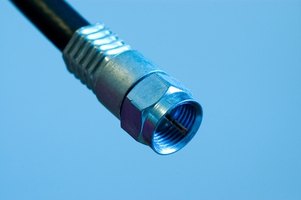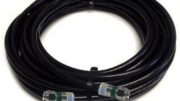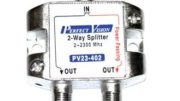Friends, I started making coaxial cables about 40 years ago. Oh my, it hurts my back just to write those words. A lot has changed since then. The biggest change to affect cable making has been the coming of the compression connector. Compression connectors are supposed to offer a more consistent connection that’s more compatible with higher signal frequencies. They are also supposed to be more water resistant. But are those claims true? A while back I set out to find out.
My own test data

About 10 years ago, I did some empirical testing of hex crimped cables vs. compression cables. I had some examples of both. The hex crimped cable dated back to the early 2000s when I people were still making those cables. I determined using the testing methods available to me that a well-made hex crimp cable performed the same as a well-made compression cable. (At least I’d hope they were well made. I made the compression cable myself.)
In later years I did additional testing once I had a spectrum analyzer. I really wasn’t able to detect any significant difference between the two cables in terms of frequency response. And that led me to the conclusion I give people all the time:
It’s not impossible to make good hex crimp cables. It’s just harder.
Compression connectors started to come into fashion in the 2000s when cable and satellite TV were growing faster than ever before. Using compression connectors let installers make good cables quickly. With a hex crimp, you really had to pay more attention. There was always the possibility you’d deform the connector without meaning to. With compression connectors you worried more about positioning the dielectric flush with the inside of the cable. Overall, compression connectors are just faster to put on and it’s easier to tell a good one.
That advice led a lot of people to think that hex crimps were dead. Compression connectors got cheaper and so did the tools. It’s rare to see a hex crimped RG6 cable anymore. However, the tech is still out there.
LMR400 and other 50 ohm cables
Take a look at this connector. It’s a common N-Male connector for LMR400 cable. LMR400 is used for high-frequency 50-ohm cables, for example for cell phone signal boosters. It’s a crimp connector. The cables carry the same frequencies as satellite, but they don’t often use compression connectors. I’ve seen some, just not many. The N connector uses a built-in pin. This makes it different from an F connector which uses the center conductor as a pin. This eliminates the whole part about having to line up the dielectric with the edge of the connector.
More to the point, N connectors are pretty big compared to F connectors. The compression tools for them are also pretty big. I don’t blame any installer who would rather carry around a fairly small crimp tool as opposed to one of those. I can’t help thinking that’s one reason crimps are more common with these larger connectors.
Let’s talk waterproofing
It’s a common chestnut that compression connectors are more water resistant than crimps. After all, it’s kind of common sense when you see that a crimp connection leaves little channels where water can get in. But it’s mostly a myth, and here’s why.
Water is strong. Water does things like carve out canyons. If a bit of water gets into your connector and freezes, it’s going to do damage, especially if it freezes and thaws repeatedly. This is true with compression connectors as well as hex crimps. If you are putting cables outdoors in vulnerable areas, you should always use weather boots no matter what kind of connection you have. It’s that simple. At some point I’ll probably do some testing where I repeatedly freeze and thaw different kinds of connectors. I’ll do it because it’s entertaining. But really, just use weather boots. It’s the right thing to do.
Get all your connectors from Solid Signal
OK, here’s the pitch. You don’t need to go to a bunch of different sources to get your connectors. You don’t need to worry about consumer-grade stuff being substituted for your pro-grade stuff. Just shop at Solid Signal for everything you need. If you’re having trouble finding the right thing, just call us at 888-233-7563 or fill out the form below. We’ll get you what you need.





